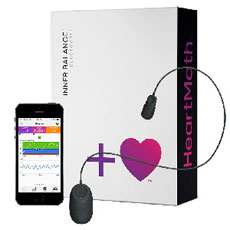How do Food Sensitivities Affect Our Health?
Symptoms of Food Sensitivity
· Dizziness
· Poor memory
· Brain fog
· Seizures
· Learning difficulties
· Anxiety
· Depression
· Arthritis
· Joint aches/pain
· Eczema
· Skin rashes
· Acne
· Psoriasis
· Asthma
· Sneezing
· Itchy/watery eyes
· Runny/congested nose
· Puffy/dark circles under eyes
· Persistent sore throats
· Itching in the roof of the mouth
· Canker sores
· Candida
· Sinusitis
· Earaches
· Coughing
· Chest discomfort
· Heart irregularities
· Sudden changes in blood pressure
· Nausea
· Diarrhea
· Constipation
· Abdominal pain and/or cramping
· Insomnia
· Chronic fatigue
· Swelling in the extremities
· Urinary frequency or urgency
· Vaginal itching
· Excessive hunger or binge eating
· ADD/ADHD
· Emotional instability or hypersensitivity
· Panic attacks
· Aggressive behavior
Identifying Food Sensitivity
The best way to find a food sensitivity is to keep a food diary. In the diary, list your actual dietary habits, including:
· Foods eaten
· Time of ingestion
· Time any symptom is observed
· Cravings
· Improvement/worsening of symptoms
Make your recordings throughout the day, rather than waiting until the end of the day when it is easier to leave things out. Be sure to record everything you consume - even vitamins, beverages, and chewing gum, etc.
After 2 weeks you can look for any recurring pattern among frequently eaten foods and symptoms. This can be difficult if you eat a lot of processed foods, as these contain many “hidden” ingredients such as corn, milk, soy, wheat, yeast, and artificial additives that are often a problem. The most suspect foods will be those that are eaten daily or more than once a week and foods that you crave or eat during the evening/night hours.
What Causes Food Sensitivities
Common culprits of food sensitivities are gluten-containing grains, (i.e. wheat, farro, einkorn, spelt, kamut, rye, barley, oats, dairy products, eggs, corn, soy, shellfish, and peanuts, food colorings, and refined sugars). Any food can become a sensitivity if eaten often enough. For example, if someone has eaten eggs every day for breakfast for many years, this can become a sensitivity to that individual. This is because the body can become irritated by any substance (healthy or not) that is constantly introduced into the body time and time again. The lining of the GI tract can get irritated and become inflamed which can lead to Leaky Gut Syndrome. The leakiness of the GI wall leaks the food material out into the bloodstream.
An analogy to help you visualize what happens within your GI tract when it is leaking is to picture a hose that has holes in it and water spurting out of the openings. It should be a healthy mucosal lined tube that is free from any openings; however, when it keeps getting irritated and becomes inflamed, little microscopic holes or cuts appear in the lining. This is how the food material leaks into the bloodstream.
Since our GI tract is not meant to leak out its contents, the body thinks the leaking material is an antibody, which the body recognizes as alien material. The body seeks to destroy these antibodies, thinking it is foreign and unrecognizable and that is one way a food sensitivity is formed.
Food Elimination and Reintroduction
One way to start the healing process of Leaky Gut is to avoid the offending food(s) that the body is fighting against. Staying away from these offenders for a specified period of time (typically 2-3 months, sometimes longer) can give the GI tract a time to heal and repair the damage to the mucosal tissue caused by the allergen/irritant. There are times when an offending food may need to be eliminated for life – this is usually seen with gluten and occasionally dairy products.
Recommended Steps for Food Elimination/Reintroduction:
1. Eliminate all identified sensitive foods for 2-3 months, or longer based on the practitioners recommendation
2. Reintroduce one of the offending foods over a 10-day reintroduction period
This 10-day period is very important to adhere to -if you add all of the foods back at once, you will not know which food is causing adverse symptoms and because it can take several days for a specific food to cause an adverse effect (it does not always occur instantly).
3. If you do not experience any adverse effects, then the next offending food can be reintroduced for another 10 days
4. Repeat these steps until all identified sensitive foods have had a 10-day reintroduction period
If the individual has several foods that were eliminated, this reintroduction period could continue for several weeks.
If no adverse symptoms occur after the reintroduction period then that food should be able to be consumed again in small quantities -once every 4 days. This is known as the rotation diet. This is very important because it prevents the once offending food(s) from being eaten daily or too much, like it most likely had been before. If you do experience adverse symptoms, it is likely you will need to fully eliminate this food from your diet permanently.
Consultations
An initial consultation is recommended for ½ hour-1 hour, depending on how many foods need to be tested.
A follow up ½ hour consult is recommended every 2-3 months for 1 year to make sure the food sensitivities are healed.
Please bring along with you the top 10 foods you eat on a daily or regular basis. If you bring in additional items, it is recommended to have the full one-hour consultation. For the foods you would like to be tested on, bring in a small amount in a baggie labeled with the contents. If you would like to bring a liquid such as milk, pour approximately a teaspoon in a little plastic container. You may also bring in an egg from home if you eat them regularly.
Applied Kinesiology/ Muscle Testing
Kinesiology, or, muscle testing is used to identify imbalances in the body’s structural, chemical, emotional, or nutritional healing needs. It is a non-invasive method that uses precise muscle feedback and muscle awareness to find potential triggers or health information. The natural feedback system receives information via the nerve pathways and the meridian system of the brain and body.
Muscle testing uses specific muscles (like the arm, fingers, or legs) for testing purposes for stressors and/or imbalances in the body, such as: foods, medications, supplements, or toxicants that could trigger an allergic or sensitivity reaction. Muscle testing assists in giving the tester information, like a communication tool from within the body.
Kinesiology is grounded in the study of anatomy and physiology and stands on the premise that the body has innate healing abilities and does its best to heal itself.
I hope this information has been helpful to you regarding food sensitivities. I look forward to meeting with you and being a part of your healing journey!


